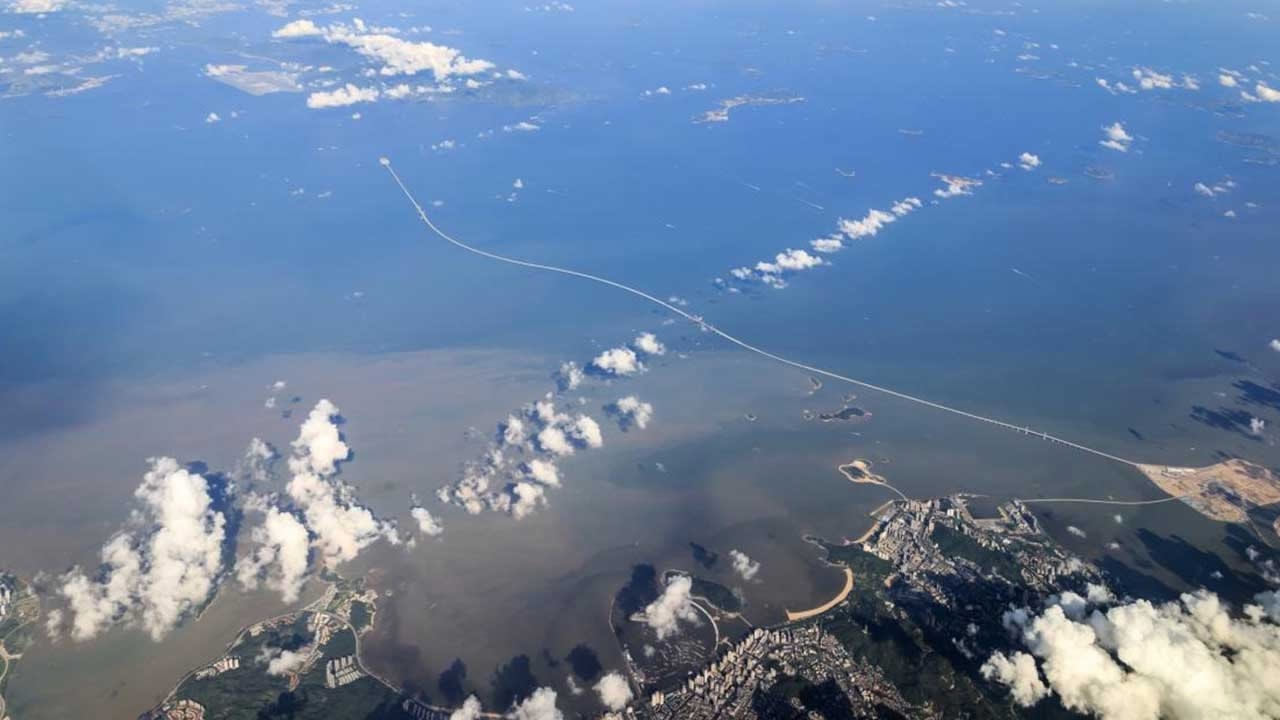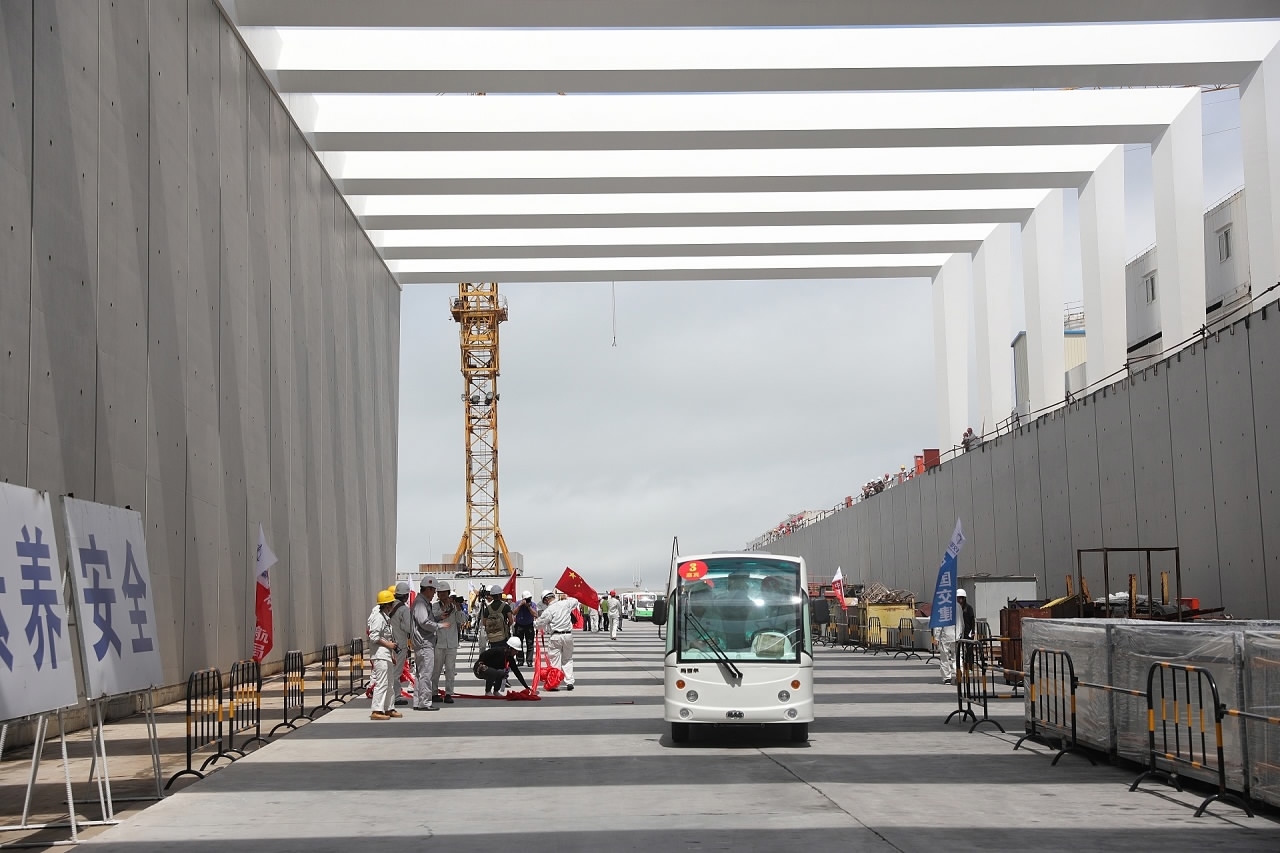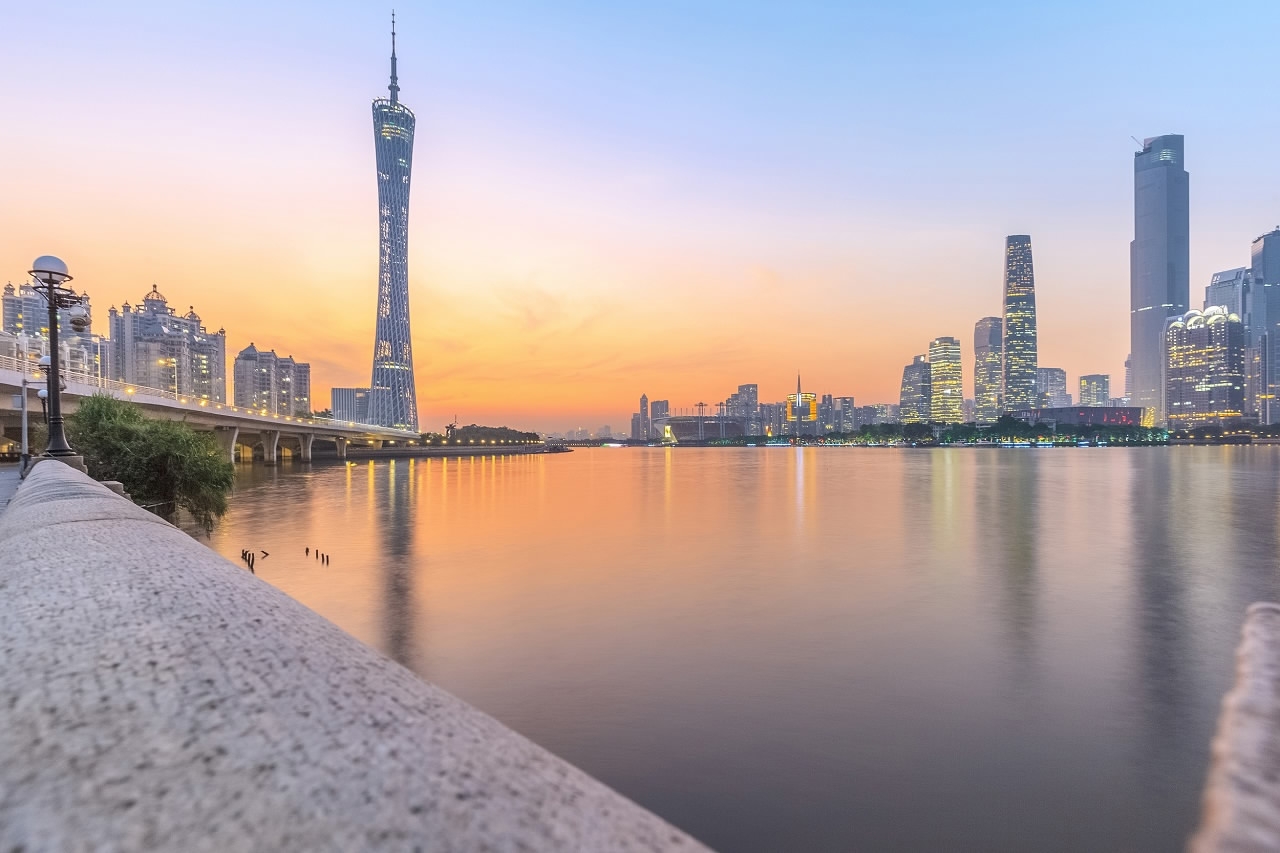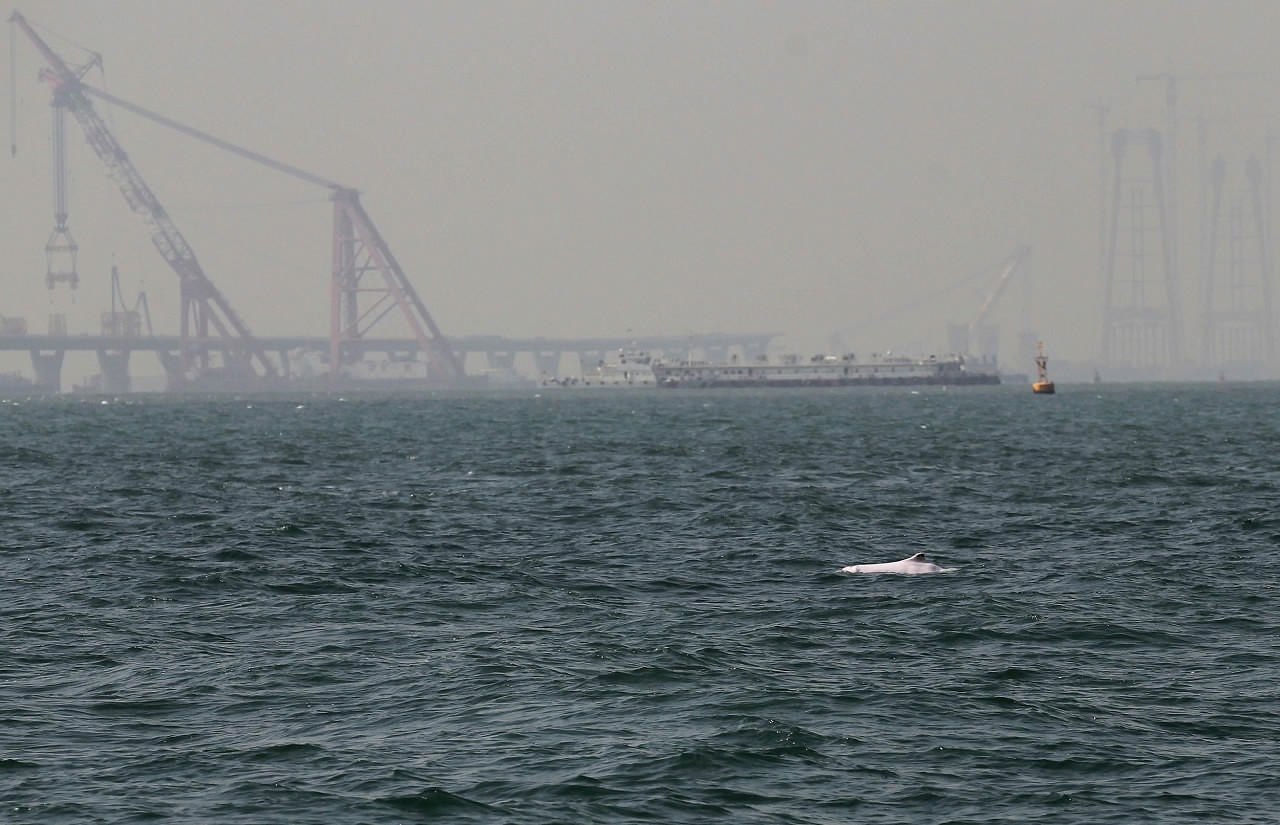
Business
22:04, 07-Jul-2017
Main body of Hong Kong-Zhuhai-Macao bridge completed

By CGTN's Ge Yunfei
The Hong Kong-Zhuhai-Macao bridge consists of four parts, a 22.9-kilometer-long bridge, a nearly seven kilometer-long underwater tunnel, two artificial islands made up of concrete and big steel pipes, and several leading bridges that connect the bridge to the cities.
On Friday, the completion of the underground tunnel was announced while some work remains like the tunnel decorations, road pavement, artificial island supporting facility construction, and other electricity and drainage system works.
The whole construction of the bridge is expected to be finished by the end of November.
Money troubles
One challenge when it comes to tolls for the bridge is to establish a fully compatible system that can perfectly work with different charging systems in Hong Kong, Macao and the Chinese mainland.

Workers prepare to celebrate the completion of the bridge's main body on July 7, 2017. /VCG Photo
Workers prepare to celebrate the completion of the bridge's main body on July 7, 2017. /VCG Photo
Regarding the price tag, the bridge has cost tens of billions of yuan to build and some people are questioning whether it can generate enough traffic to recover the cost.
In August, a hearing is scheduled to discuss toll costs that will reflect the authorities confidence in the bridge's profitability.
Other issues like border control, security checks, and how to solve cross-border cars' license problems are still under negotiation.
Balancing the delta
This bridge along with the high-speed rail link between Hong Kong and Guangzhou are the two most important links of the one-hour traffic circle in the Pearl River Delta.
The Pearl River Delta is China's richest and most populated area. It produces 13 percent of China's GDP with less than 5 percent of the total population.

The Pearl River in Guangzhou. /VCG Photo
The Pearl River in Guangzhou. /VCG Photo
But inside the Pearl River Delta, development is very imbalanced.
On the east side of the river, there is an important economic corridor which has three of the world's top 10 ports. And on the west side, there is little of note except for the good air quality and some medium-sized manufacturing bases.
So, experts believe the bridge, which shortens the travel time from four hours to about 40 minutes, will greatly facilitate the flow of capital, human, and logistics between the west and east banks.
Dolphins are fine: official numbers
But building such a mega project has been arousing many environmental concerns, like the protection of the white-flag dolphin which is an endangered species in China. But the deputy director of the bridge administration told CGTN they have been monitoring the numbers of the dolphins since 2009.

A white-flag dolphin is spotted near the construction site of the bridge in 2014. /VCG Photo
A white-flag dolphin is spotted near the construction site of the bridge in 2014. /VCG Photo
According to them, the number actually increased from around 1,400 to 2,060. So they believe they have kept the damage to the environment to a minimum.

SITEMAP
Copyright © 2018 CGTN. Beijing ICP prepared NO.16065310-3
Copyright © 2018 CGTN. Beijing ICP prepared NO.16065310-3